27+ Sample Cash Flow Statements
-
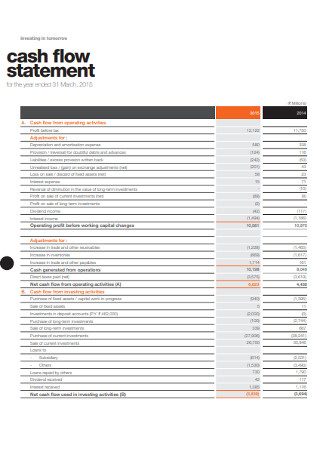
Investing Cash Flow Statement
download now -
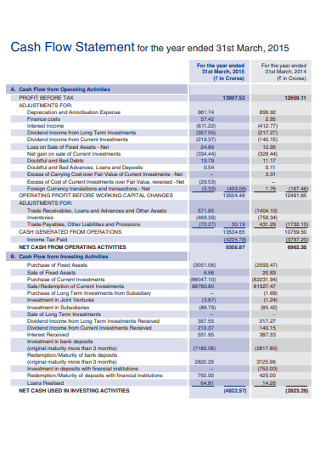
Year Ending Cash Flow Statement
download now -
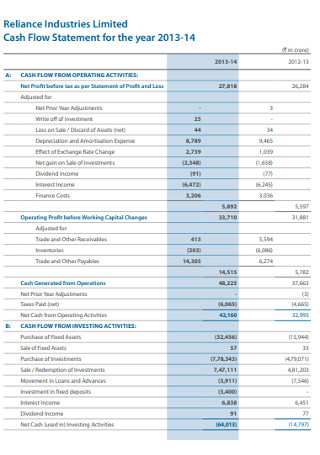
Industries Cash Flow Statement
download now -
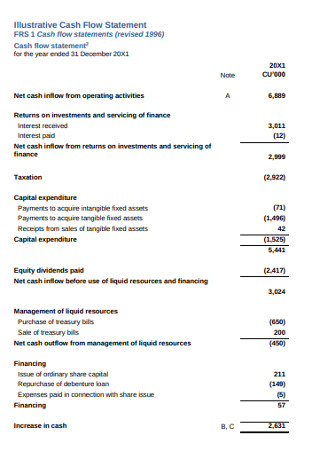
Illustrative Cash Flow Statement
download now -
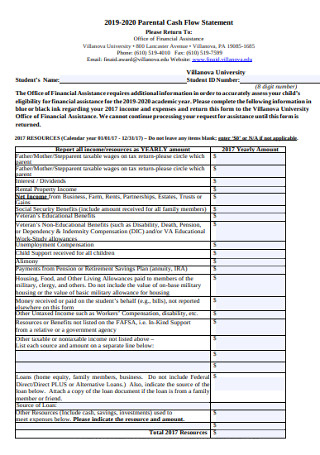
Parental Cash Flow Statement
download now -
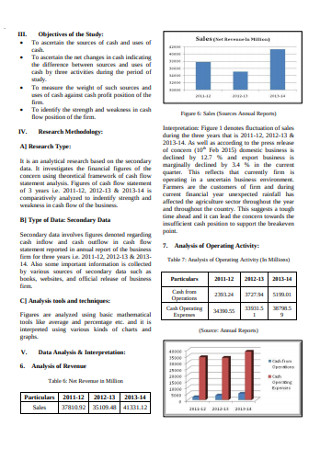
Analysis of Financing Cash Flow Statement
download now -
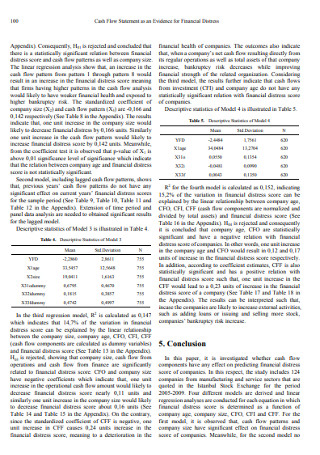
Cash Flow Statement Evidence for Financial Distress
download now -
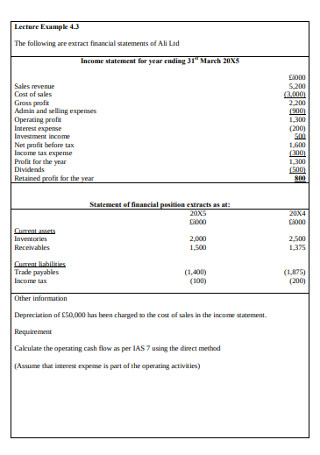
Company Cash Flow Statement
download now -

Cash Flow Statement Presentation
download now -

Personal Cash-Flow Statement
download now -
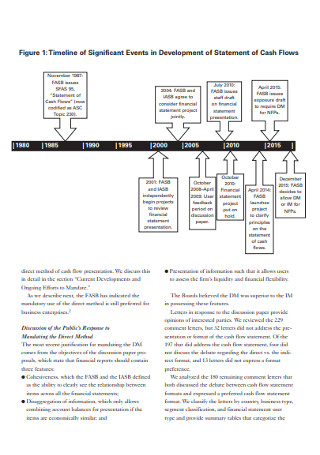
Event Development Cash Flow Statement
download now -
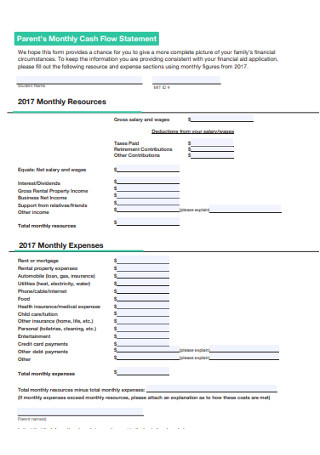
Parent’s Monthly Cash Flow Statement
download now -

Group Cash Flow Statement
download now -
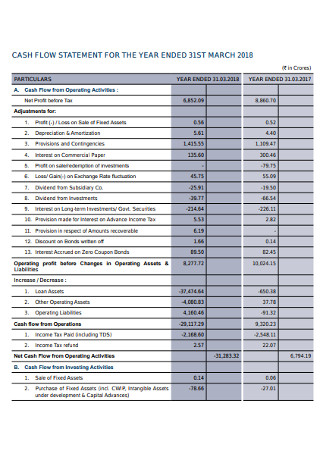
Corporation Cash Flow Statement
download now -
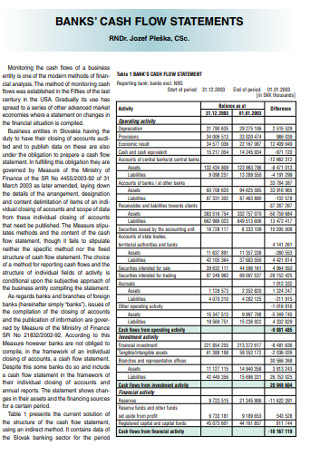
Banks Cash Flow Statement
download now -
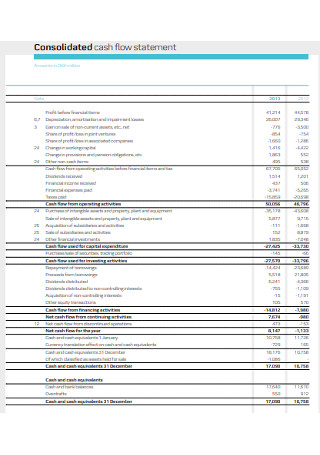
Consolidated Cash Flow Statement
download now -
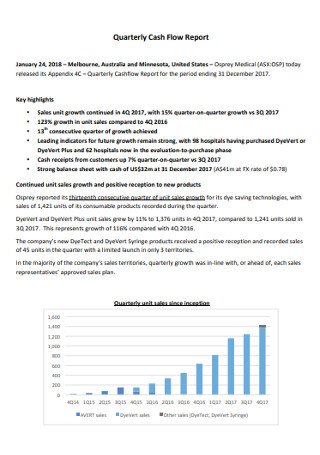
Quarterly Cash Flow Report
download now -
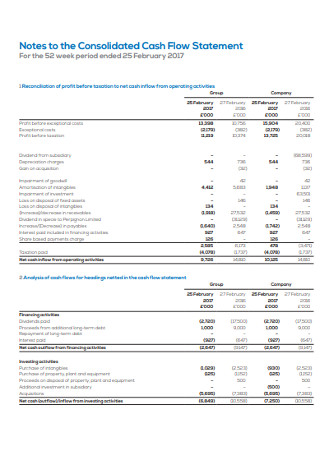
Notes to the Consolidated Cash Flow Statement
download now -
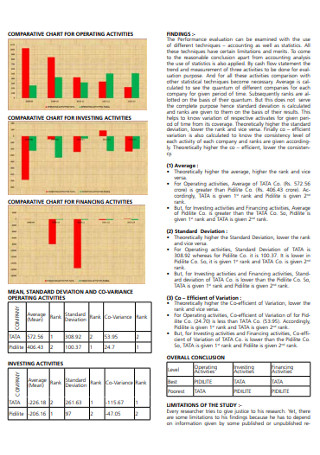
Comparative Study on Cash Flow Statements
download now -
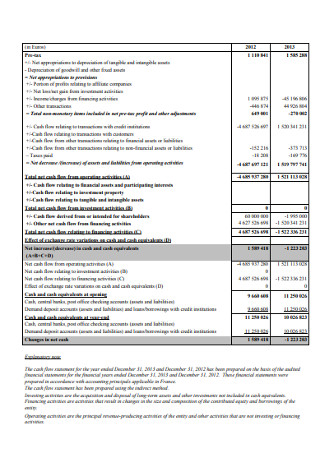
Home Loan Cash Flow Statement
download now -
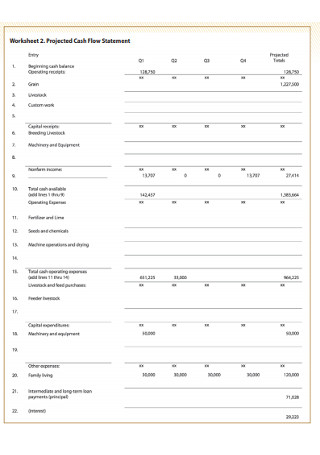
Projected Cash Flow Statement
download now -
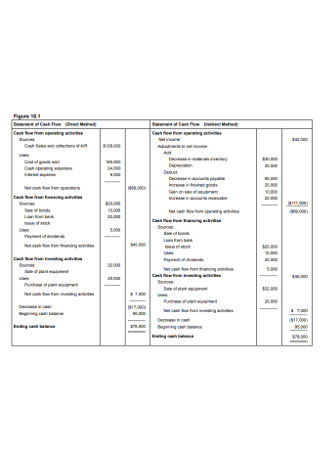
Business Cash Flow Statement
download now -
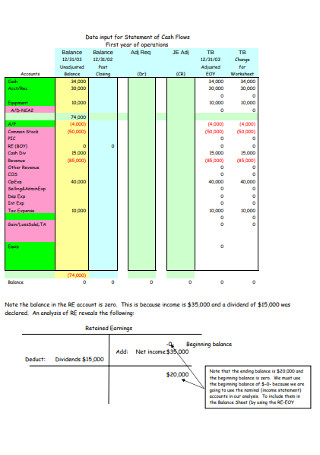
Study Cash Flow Statement
download now -
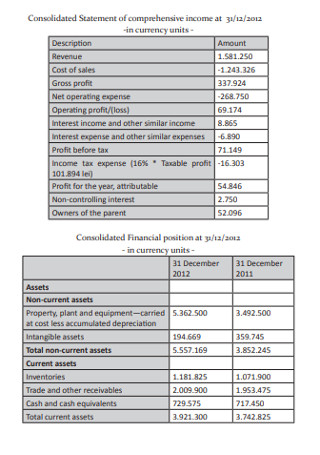
Presentation of Consolidated Statement of Cash Flow
download now -
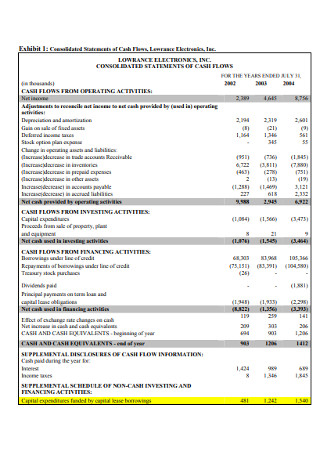
Financial Analysis Lab Cash Flow Satement
download now -
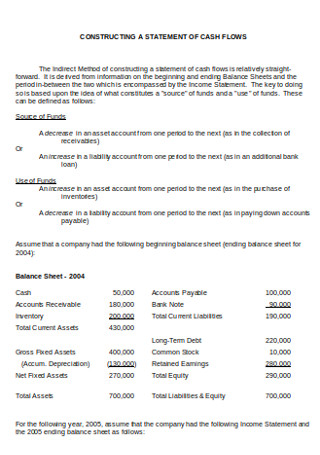
Constructing Cash Flow Statement
download now -
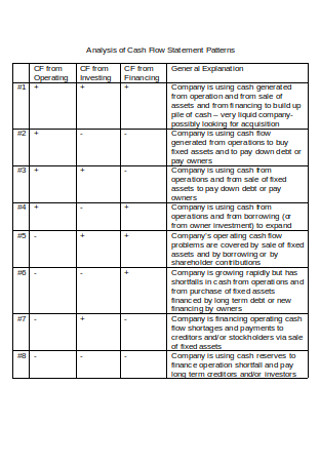
Analysis of Cash Flow Statement Patterns
download now -
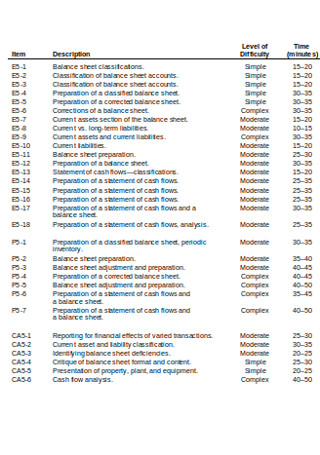
Balance Sheet of Cash Flow Statement
download now -
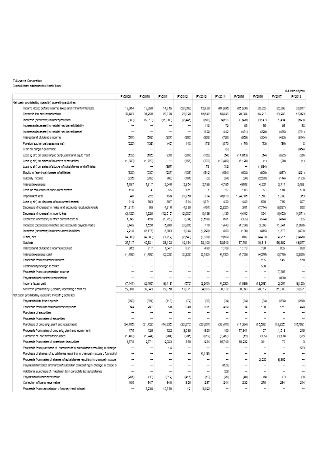
Corporation Cash Flow Statement Template
download now
For this reason, you should always keep track of your financial activities regardless of how confident you are that your business is profitable. And in doing so, you have to prepare various financial statements to avoid discrepancies and foster transparency to shareholders, investors, creditors, and government agencies. In this guide, we will walk you through the fundamentals of one type of financial statement which is the cash flow statement.
What Is a Cash Flow Statement?
Preparing financial statements will always be a part of running a company or a business. These documents give business owners an accurate picture of their financial performance over the course of their business operations. There are various types of financial statements, and one of these is the cash flow statement. It is a written record of the cash inflows and outflows of a particular company for a specific period. To put it into perspective, the cash inflow refers to the sources of a company’s finances such as its sales or investments. On the other hand, cash outflow refers to the funds a company spends for various expenses—including wages, equipment, debts, etc. Other types of financial statements are balance sheets and income statements. Although these two financial statements were required for quite a long time already, it was only during 1987 when the Financial Accounting Standards Board (FASB) in the United States mandated businesses to issue a cash flow statement as part of the financial report.
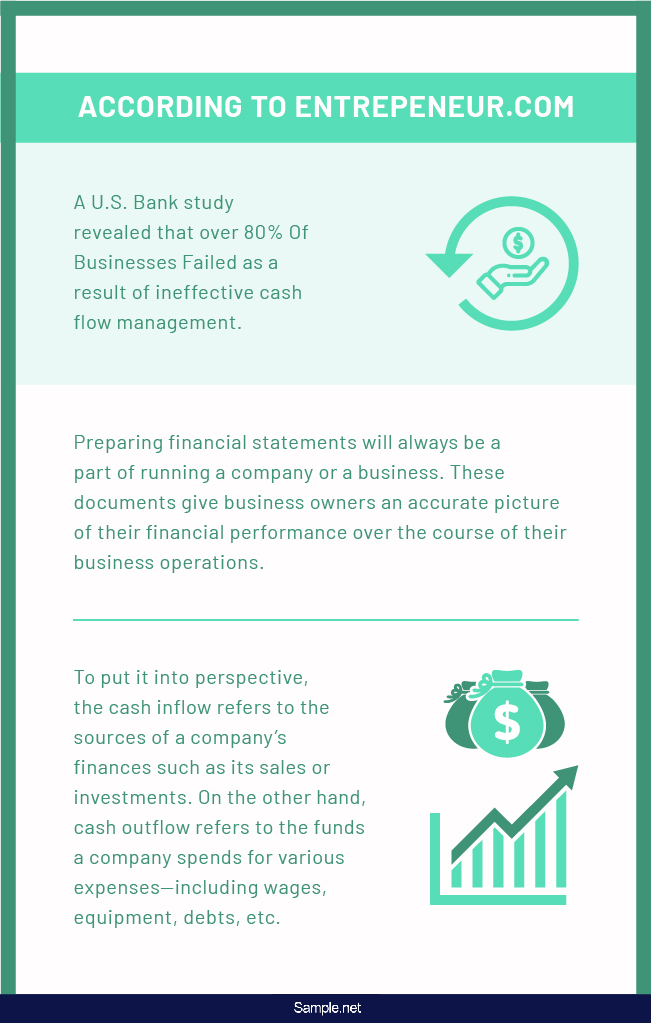
Elements of a Cash Flow Statement
One can present a cash flow statement through direct or indirect method. Regardless of the method or format you make use of, though, there is no such thing as following a standard formula in creating a cash flow statement. Nevertheless, this statement will not serve its purpose in the absence of one of its necessary components. Listed below are the three crucial elements of a cash flow statement.
Importance of Cash Flow Statement
Keeping a business afloat might be an impossible endeavor, especially when it is facing cash flow problems. To support this claim, a U.S. Bank study revealed that over 80% of businesses failed as a result of ineffective cash flow management. Cash flow is the sum of money that a business receives and disburses during a particular time frame. However, it is not enough that you are aware of the financial activities of your business. You should bear in mind that proper timing is crucial especially when incurring expenses for the company. For this reason, you have to perform a cash flow analysis after coming up with the cash flow statement. In this section, let us look into the importance of having a cash flow statement.
Gives Accurate Figures
A cash flow statement will show you the exact amount of cash your business generates and disburses for a specific period. Moreover, it provides you an accurate figure of all other cash transactions in your business. As previously mentioned, a cash flow statement covers your business’ operating, investing, and financing activities. It means that when you have these figures at hand, you will have a clearer picture of where your money went and not just the sales generated and expenses incurred for the business’ core operations.
Measures a Company’s Performance
A business’ financial performance can be measured through its ability to cover expenses which include paying bills, debts, and other liabilities. Having a cash flow statement enables business owners to have a comprehensive view of how effective can their company manage its finances. With this document at hand, proprietors can also evaluate the financial health of their business which will then be their foundation in making decisions.
Helps in Budgeting
A financial document such as a cash flow statement helps business owners make sound decisions in terms of finances. When you have the complete numerical data of your business’ cash inflow and outflow, you can strategize the course of action you will take to generate more cash instead of spending more. In addition to that, you can plan out when will be the right time to make investments which will help finance the business’ growth in the future. One can also refer to a cash flow statement when budgeting for a company’s future necessities.
Informs Investors of the Financial Standing of a Business
Business owners are not just the ones who can benefit from a cash flow statement. This type of financial statement also helps investors become fully aware of the actual amount of cash a business can generate. Other than that, it gives them an overview of the company’s financial standing. When they take this information into account, they can figure out whether or not it will be worth the risk to invest in a particular business.
How to Create a Cash Flow Statement
No matter how big or small your business is, staying on top of your finances is a necessity. However, it is not enough that you monitor your enterprise’s financial activities on a macro level. You need to have a closer look at everything to save your business from unexpected failure. Keeping tabs of your monetary resources entails creating financial documents for a more comprehensive and accurate view of the accounting events in your company. In this article, we have outlined a step-by-step guide to help you create a cash flow statement for your business.
Step 1: Specify the Time Frame
Businesses may prepare financial statements on a monthly, quarterly, or yearly basis. Doing so enables proprietors to provide updates about the financial situation of their company to investors, customers, lenders, and other parties concerned. Before you begin your calculations, you first have to specify the time frame your cash flow statement will cover. Then, obtain essential documents and figures—these should correspond with the period your cash flow statement will include. You need to have the balance sheet, profit and loss statement, cash flow statement from the previous period, and other documents in relation to the company’s cash transactions.
Step 2: Determine What Method to Use
One can prepare a cash flow statement by making use of either direct method or indirect method. The direct method presents a list of the actual cash that flows into and out of a business. When you present your cash flow statement through the direct method, you need to take into account the money received from customers and cash payments made during the accounting cycle. Other factors to consider in this accounting treatment are as follows: employees’ salaries, cash paid to suppliers, interest income, income tax, dividends received, and interest paid. On the other hand, you have to start with the net income (or loss) then make adjustments for noncash items when you utilize the indirect method. More businesses opt for the indirect method over the direct method since it is more simple to prepare. Regardless of the method you prefer, though, cash flow under financing and investing activities will remain identical.
Step 3: Calculate the Cash Inflow
Now that you have already decided what method you will use, you may start calculating the cash inflow of your business. In doing so, only take into consideration the actual finances you will receive and remove non-cash expenses such as depreciation. Also, make sure to include every cash your business receives such as sales of products, services, assets, and/or loans. Remember to separate the cash generated from your business’ primary operations, investments, and financing.
Step 4: Proceed to the Cash Outflow
After calculating the cash inflow, determine and list down the cash your business disburses for a particular period. These expenses may include big-ticket items, equipment purchases, rent, payroll, debts, and other payments wherein you have to make deductions in your company’s financial resources. Just like the cash inflow, see to it that you place the expenses into their respective categories.
Step 5: Determine the Net Increase
With the figures you have on your sheet, you can already determine the net increase or decrease of your business. To do so, add up the sum of your cash flow from the operating activities, investing activities, and financing activities. For example, if your net cash flow from operating activities was $27 000 000 and your net cash flow from investing and financing activities amounted to – $20 550 000, your net increase to cash is $6 450 000.
The Dos and Don’ts in Creating a Cash Flow Statement
A Kabbage study featured in an article from Forbes revealed that 91% of proprietors of small businesses focus on cash flow management for at least 20 hours per week. With the limited time left, you might neglect other tasks and responsibilities you have at hand such as developing your products and services, marketing your business, and hiring competent employees for the growth of your company. Don’t worry, though! That will not be the case if you know the basics of cash flow management and the dos and don’ts in creating a cash flow statement. The rules listed below will serve as your guide as you write a cash flow statement.
Dos
1. Do gather necessary documents.
Documents bear a great significance in different aspects of our lives, especially when finances are involved. For your cash flow statement to contain accurate figures and data, you need to compile necessary documents that have something to do with your company’s cash transactions. In addition, make sure that you keep your financial statements from the previous accounting cycles. It is important to have these past financial documents so that you can make comparisons and strategize a more effective business plan.
2. Do know the accounting cycle process.
The accounting cycle is a series of activities a particular business has to undergo to keep track of its profitability. According to Investopedia, this holistic process entails identifying, documenting, and analyzing the financial transactions or accounting events of a company. It also includes preparing financial statements such as income statements, balance sheets, and cash flow statements. As a business owner, you should know the significance of knowing the basics of the accounting cycle for you to come up with accurate financial statements by the end of the period.
3. Do keep track of your cash flow.
Your financial statements will make no sense if you don’t monitor your cash flow on a regular basis. Keeping track of your business’ cash flow enables you to plan out strategic measures in the event that your business is on the brink of failure. As you manage your financial activities, don’t forget to put the figures into writing. The frequency of preparing financial statements or documents depends on the length of a company’s accounting cycle.
Don’ts
1. Don’t count non-existing monetary resources.
When you prepare a cash flow statement, you should bear in mind to only include the actual cash you have on hand. Take this for example—you are selling a product for $13 000; however, the customer only paid $3 000 as a downpayment. Therefore, the amount of cash you will write down in your cash flow statement will just be $3 000 since it is the actual money you received from the customer.
2. Don’t miss a single cash-based transaction.
A cash flow statement is a compilation of cash-based transactions a company has for a given period. For your document to fully serve its purpose, you should be keen on the figures you input and make sure that you have not missed a single transaction especially when it involves a large sum of money. Take into account the business transactions with the customers, investors, and creditors.
3. Don’t overlook the importance of other financial statements.
This article only focuses on the fundamentals and the importance of a cash flow statement. Nevertheless, you should also prepare a balance sheet and an income statement to complete your financial reports. With the data these three documents hold, you will have a clearer picture of your business’ financial standing.
